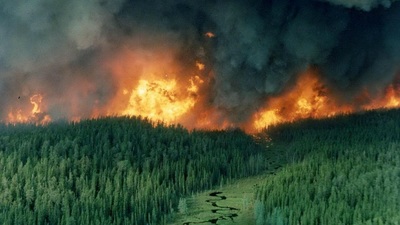Addressing Vegetation Conservation and Ecosystem Collapse in the Face of a Changing Climate
- Student
- Michael Spoltore
- College(s)
- College of Science
- Faculty Advisor
- Jason MacLachlan
- Class Year
- 2020

Understanding the complex sets of factors and interactions that allow ecosystems to remain stable is a huge part of a land manager’s job in conserving at-risk areas and the flora and fauna they contain. Sometimes however these stable systems become overwhelmed by outside forces and collapse from one state to another, such as when a wildfire tears through a forest stand, leaving sparsely vegetated prairie land behind. This prairie land is much more likely to catch on fire, and so it becomes incredibly hard for this land to become reforested.
Systems like these, where one stable ecological state collapses into another, occur worldwide and are governed by many different mechanisms, not solely fires. There are huge management implications to these systems since these ecosystem collapses are often unpredictable, occur rapidly, and are very difficult to reverse. Despite their importance, these systems are understudied, underdocumented, and there has been no cohesive analysis of how widespread these systems are.
My capstone attempts to primarily synthesize a large body of existing literature on Multiple Stable State ecosystems in order to better understand their distribution, their scale, and the factors that underlie them. Next, we sought to analyze how powerful the scales of these sorts of systems were from a conservation perspective by examining how different forest stands in the Midwest could be today if conservationists in the 1800s had varying conservation goals and favored certain species distributions. Further, we attempted to analyze the implications of systems like these on protected lands, which is where most conservation is being done.